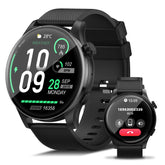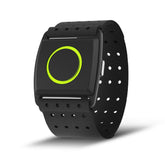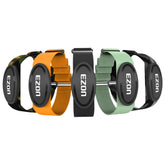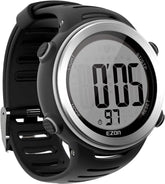Deciphering Healthy Heart Rates in Different Fitness Scenarios
Understanding your heart rate is crucial for optimizing your workouts and maintaining a healthy lifestyle. Different fitness activities—such as high-intensity interval training (HIIT), running, and yoga—require varying heart rate ranges to achieve desired health benefits. This guide will delve into healthy heart rate ranges for different fitness scenarios, the impact of age and fitness level, and the importance of using a heart rate monitor watch, the best sports watch for workouts, and a fitness tracker watch to monitor your progress.
Understanding Heart Rate Zones
Before exploring specific fitness activities, it’s essential to understand the concept of heart rate zones. Your heart rate can be categorized into several zones based on intensity:
-
Resting Heart Rate: The number of beats per minute (bpm) when you are at rest. A typical resting heart rate for adults ranges from 60 to 100 bpm. Athletes may have lower resting heart rates due to higher cardiovascular efficiency.
-
Moderate Intensity Zone: 50-70% of your maximum heart rate (MHR). This zone is ideal for activities like brisk walking or light jogging.
-
Vigorous Intensity Zone: 70-85% of your MHR. This zone is targeted during activities like running, cycling, and HIIT workouts.
-
Maximum Effort Zone: 85-100% of your MHR. This zone is typically reached during short bursts of intense exercise.
Calculating Your Maximum Heart Rate
A common method to estimate your maximum heart rate (MHR) is to subtract your age from 220. For example, if you are 30 years old, your estimated MHR would be:
MHR=220−30=190bpm
Healthy Heart Rate Ranges for Different Fitness Activities
1. High-Intensity Interval Training (HIIT)
HIIT workouts involve alternating between short bursts of intense activity and periods of rest or lower-intensity exercise. During HIIT:
- Target Heart Rate: Aim for 80-95% of your MHR.
- Benefits: Increases cardiovascular fitness, burns calories, and improves metabolic health.
Using a heart rate monitor watch can help you track your heart rate during these intense intervals, ensuring you stay within your target range.
2. Steady-State Cardio (Running, Cycling)
For steady-state cardio, where you maintain a consistent pace, such as running or cycling:
- Target Heart Rate: Aim for 65-85% of your MHR.
- Benefits: Builds endurance, supports weight management, and improves cardiovascular health.
The best sports watch for workouts can provide real-time heart rate data, helping you adjust your intensity as needed.
3. Strength Training
During strength training, your heart rate may vary depending on the intensity and duration of the exercises. Generally:
- Target Heart Rate: Aim for 60-80% of your MHR.
- Benefits: Improves muscular strength and endurance, promotes metabolic rate, and aids in weight management.
A fitness tracker watch can monitor your heart rate throughout your strength workouts, allowing you to gauge your exertion levels.
4. Yoga and Low-Intensity Activities
In activities like yoga or stretching, the heart rate tends to be lower:
- Target Heart Rate: Aim for 50-65% of your MHR.
- Benefits: Enhances flexibility, reduces stress, and promotes relaxation.
While you may not need to focus as much on heart rate during these activities, having a fitness tracker can still provide insights into your overall heart health and recovery.
Impact of Age and Fitness Level
Age
As you age, your maximum heart rate tends to decrease. This can mean lower target heart rate zones for older adults. It’s essential to adjust your intensity levels accordingly:
- Younger Adults (20-30): MHR is higher, allowing for more intense training.
- Middle-Aged Adults (40-50): MHR decreases; adjust your target heart rate zones.
- Older Adults (60+): Focus on moderate intensity and ensure you’re not pushing past your adjusted target heart rate.
Fitness Level
Individuals with higher fitness levels may have lower resting heart rates and may recover more quickly after intense workouts. Here are some considerations based on fitness level:
- Beginners: Start at the lower end of your target heart rate zones to build a foundation.
- Intermediate: Work towards the middle of your target heart rate zones for enhanced cardiovascular benefits.
- Advanced: Push into the higher end of your target heart rate zones to maximize performance.
Conclusion
Monitoring your heart rate during various fitness activities is crucial for optimizing your workouts and maintaining a healthy lifestyle. By understanding healthy heart rate ranges for activities like HIIT, steady-state cardio, strength training, and yoga, you can tailor your workouts to achieve your fitness goals effectively. Utilizing a heart rate monitor watch, the best sports watch for workouts, or a fitness tracker watch will help you stay informed about your heart rate, ensuring you train safely and effectively. Embrace the knowledge of healthy heart rates, and take charge of your fitness journey with confidence!









